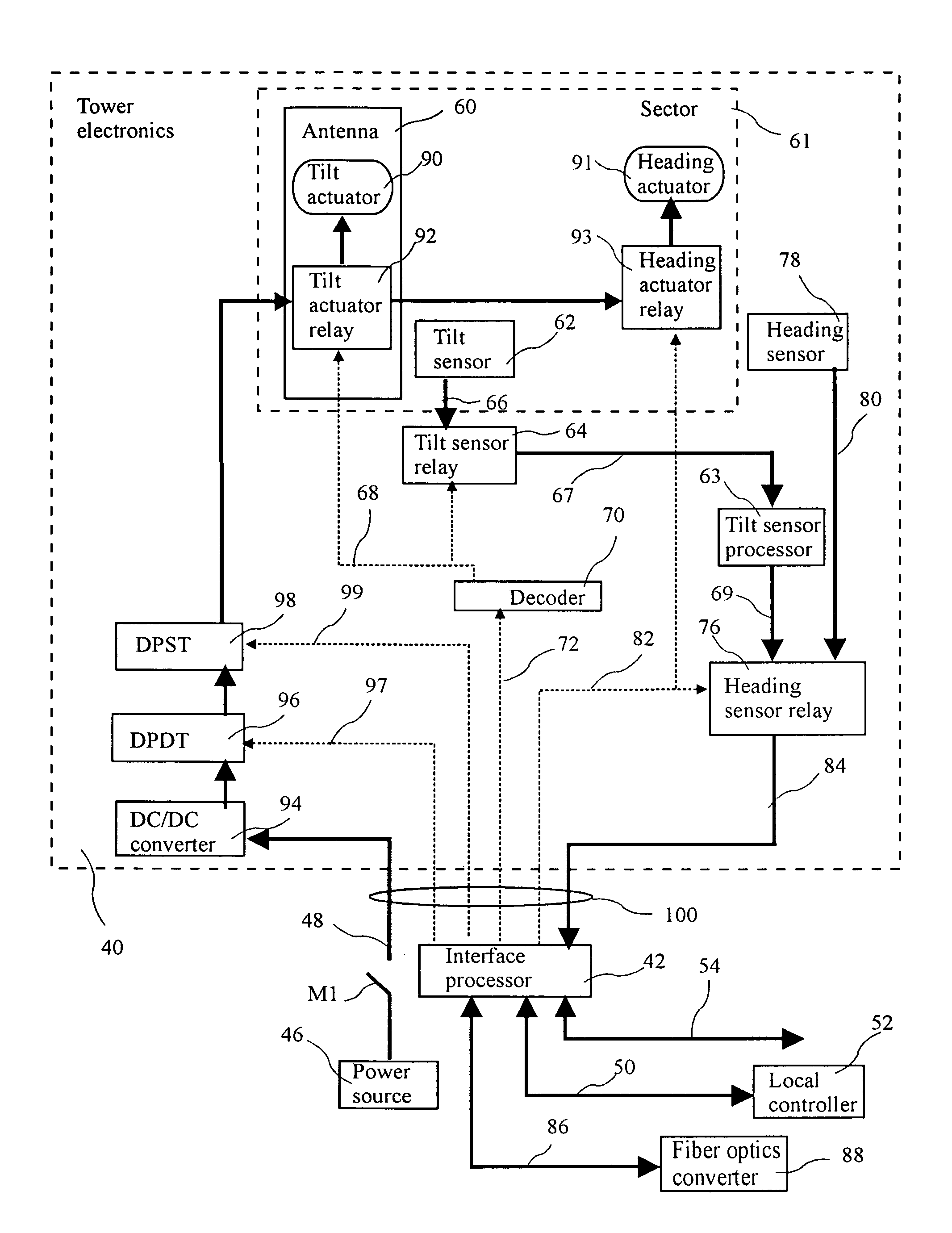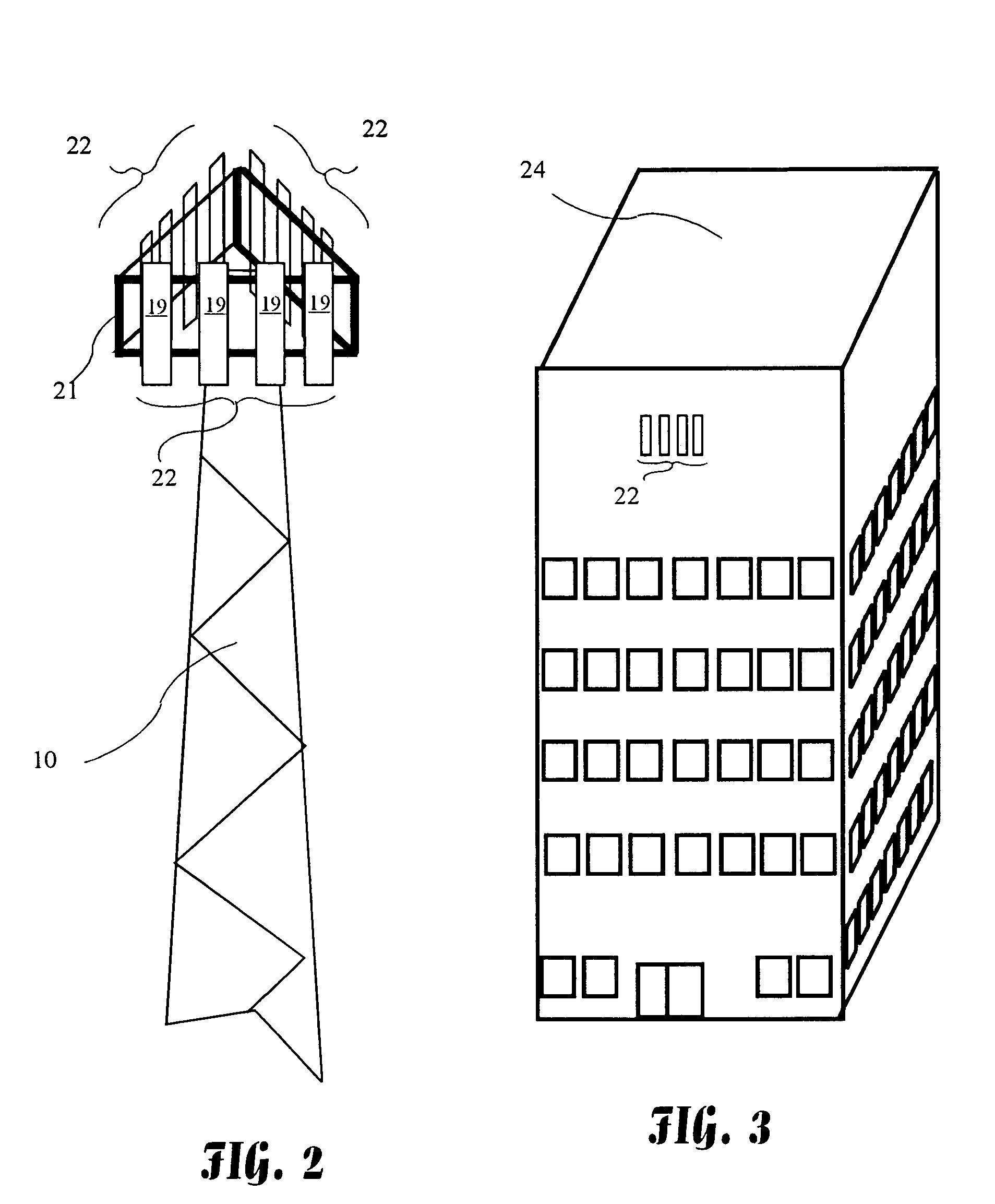Cell phone tower antenna tilt and heading control
- Summary
- Abstract
- Description
- Claims
- Application Information
AI Technical Summary
Benefits of technology
Problems solved by technology
Method used
Image
Examples
Embodiment Construction
[0027]The following description is of the best mode presently contemplated for carrying out the invention. This description is not to be taken in a limiting sense, but is made merely for the purpose of describing one or more preferred embodiments of the invention. The scope of the invention should be determined with reference to the claims.
[0028]A cell phone system having cooperating cells 12a–12c and a switching center 16 is shown in FIG. 1. Each cell 12a–12c includes a tower 10a–10c, and each tower includes an antenna array 20. The towers 10a–10c are connected by communications lines 18a–18c to the switching center 16. The switching center 16 monitors the activity in cells 12a–12c, and switches individual cell phones between the cells 12a–12c as needed to maintain contact between the cell phones and the cells 12a–12c, and to balance loads between cells 12a–12c.
[0029]Three antenna sectors 22 arranged in a triangle are shown mounted to a tower 10 using antenna mounts 21 in FIG. 2. ...
PUM
 Login to View More
Login to View More Abstract
Description
Claims
Application Information
 Login to View More
Login to View More - R&D
- Intellectual Property
- Life Sciences
- Materials
- Tech Scout
- Unparalleled Data Quality
- Higher Quality Content
- 60% Fewer Hallucinations
Browse by: Latest US Patents, China's latest patents, Technical Efficacy Thesaurus, Application Domain, Technology Topic, Popular Technical Reports.
© 2025 PatSnap. All rights reserved.Legal|Privacy policy|Modern Slavery Act Transparency Statement|Sitemap|About US| Contact US: help@patsnap.com



